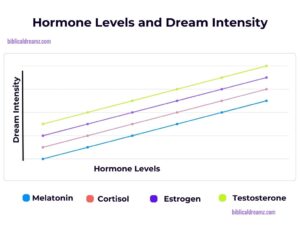Dream cycles are the natural, recurring patterns of sleep that guide not only how well you rest but also shape the nature and vividness of your dreams. In essence, a dream cycle is a complete progression through various sleep stages—including light sleep, deep sleep, and rapid eye movement (REM) sleep—each contributing distinct characteristics to your dream experience.

Key Takeaways
- Natural Rhythm: Dream cycles are the repeating patterns of sleep that typically last about 90 minutes each, repeating 4 to 6 times throughout the night.
- Stage Specificity: Different stages—light (NREM stages 1 and 2), deep (NREM stage 3), and REM sleep—play unique roles in the formation, clarity, and emotional tone of dreams.
- Memory & Emotion: The REM stage, where vivid dreams occur, is crucial for emotional processing and memory consolidation.
- Practical Benefits: Understanding your dream cycles can improve sleep quality, enhance dream recall, and provide insight into your subconscious mind.
Understanding Sleep Architecture
Sleep isn’t a monolithic state—it’s composed of a series of cycles that orchestrate your journey through varying depths of rest. Each cycle typically spans around 90 minutes, evolving from light sleep into deep sleep, and eventually into REM sleep where dreaming reaches its peak.
This cyclic nature means that as the night progresses, your body experiences longer periods of REM sleep, which can lead to more elaborate and memorable dreams.
The Stages of Sleep and Their Roles
NREM Sleep
- Stage 1: This is the lightest stage of sleep—a transition from wakefulness where your brain begins to slow down. Brief, fleeting images or sensations might occur as you drift off.
- Stage 2: In this stage, your body relaxes further and brain activity continues to slow. Sleep spindles and K-complexes appear on an EEG, signifying that your mind is gently disengaging from external stimuli.
- Stage 3 (Deep Sleep): Known as slow-wave sleep, this is the most restorative phase. Although dreams in deep sleep are less vivid, this stage is vital for physical recovery and memory consolidation.
REM Sleep
REM sleep is where dreams truly come alive. During REM, brain activity surges, resembling the patterns seen during wakefulness, while your body remains effectively paralyzed to prevent acting out dreams. This stage is not only essential for producing vivid and emotionally charged dreams but also plays a key role in processing experiences and emotions from the day.
Related: Dreaming of Art
How Dream Cycles Influence Your Dream Experience
Each phase of your dream cycle contributes differently to your nightly narrative:
Get instant dream insights with our Free Dream Interpretation App
- Early Cycles: Dreams tend to be shorter and more thought-like. They may lack the vivid detail and emotional intensity seen later in the night.
- Later Cycles: As the night wears on, REM periods lengthen, resulting in longer, more elaborate dreams. This is when you’re more likely to experience highly emotional or even surreal dream scenarios.
- Memory Integration: The REM stage is a time for emotional and memory processing. Vivid dreams during these cycles can serve as a mental sandbox for working through complex feelings or unresolved conflicts.
The Impact of Dream Cycles on Health and Well-Being
Understanding your dream cycles isn’t just fascinating—it can also have real-life benefits. Healthy sleep cycles are linked to improved cognitive function, emotional balance, and overall well-being.
Disturbances in these cycles may contribute to mood disorders, memory issues, and decreased overall sleep quality. Recognizing patterns in your dreams could even highlight areas of stress or unresolved issues in your waking life.
Tips to Enhance Dream Recall and Quality
- Maintain a Dream Journal: Writing down your dreams as soon as you wake up can help you capture those fleeting memories and notice recurring themes.
- Establish a Sleep Routine: Regular sleep patterns can improve the consistency of your sleep cycles and the quality of your REM sleep.
- Mindful Relaxation: Practices such as meditation or deep breathing before bed can help ease the transition into sleep, allowing for smoother progression through your sleep stages.
- Optimize Your Sleep Environment: A comfortable, dark, and quiet sleeping space supports uninterrupted cycles, ensuring you get the full restorative benefits of each sleep phase.
Final Thoughts
Dream cycles are much more than a scientific curiosity—they offer a window into the intricate dance between our physiological needs and our emotional lives. By understanding the stages of sleep and how they shape our dreams, we can not only enhance our sleep quality but also harness the power of our subconscious to foster emotional healing and personal growth.





